Hiking Otter Creek Wilderness, Part 2
November 20, 2017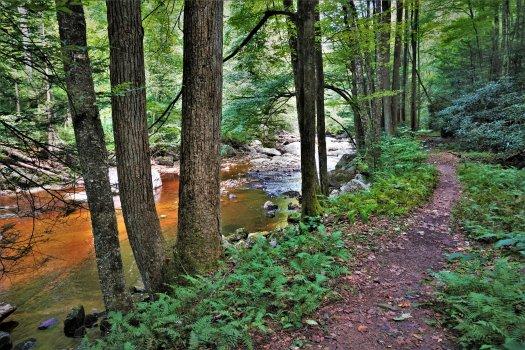
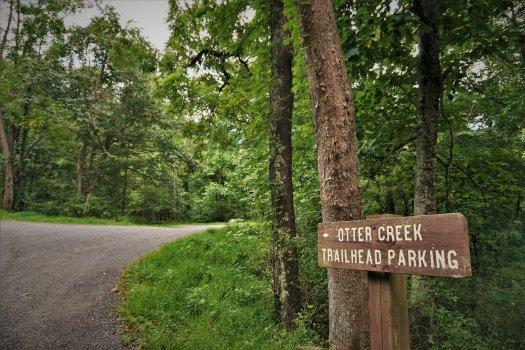
In part one of Hiking Otter Creek Wilderness I covered the general idea of what makes hiking in Otter Creek Wilderness so special to those that cherish nature and adventure. Part two features the western trailhead of Otter Creek Trail, which begins at the confluence of Otter Creek and the Dry Fork River near Hendricks, West Virginia. If there was a “most popular” entrance, this would be the one. Particularly if you are coming from Canaan Valley via country road (CR) 45 to Rt. 72, which is just a half-mile south of the Canaan Valley Resort main entrance. For those coming from Davis, Thomas, or Parsons, use Rt. 219 until you come to the intersection of Rt. 72 and signage for Hambleton and Hendricks.
A meager USFS wooden sign identifies the entrance to the parking lot of Otter Creek Trail.
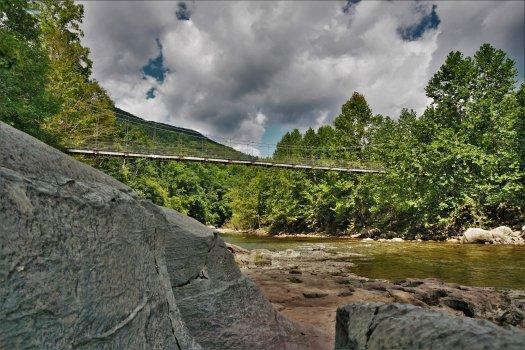

Possibly the most thrilling part of your day is getting to the trailhead at the mouth of Otter Creek. A robust swinging foot-bridge safely spans the whitewater of the Dry Fork River. At lower water levels 3-D, checker board like rock formations make up the riverbed, a perplexing result from millions of years of erosion. Once across the Dry Fork swinging bridge, hang a right to access the river bank and in another 50 feet will be the sign for Otter Creek Trail.
There are lots of options at this point for day hikers, nature photographers, and overnight campers in the 20,698 acre Otter Creek Wilderness Area. Either way, there is only one way in and out. Meaning that day hike options are hiking an “out and back” on the same trail, or, as I call it, hiking in a “lollipop” shaped loop. Keep in mind, views are remarkably different when walking up river vs. downriver; with the upriver views being more revealing.
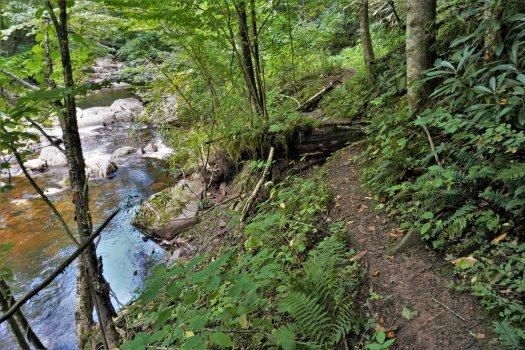
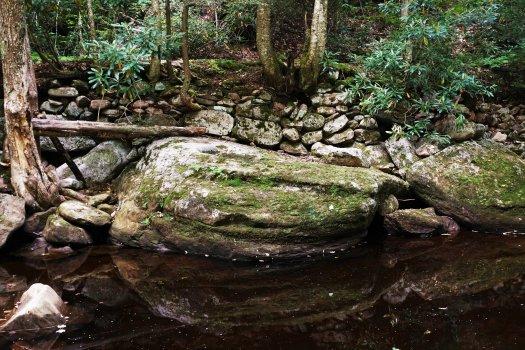
History is present at all moments when hiking Otter Creek Trail, from the headwaters to the confluence of the Dry Fork River, men were logging Otter Creek Wilderness 120 years ago. Railroad grades built mostly by hand starting in 1897, now support the majority of the trail system in Otter Creek Wilderness.
Notice the hand-laid, dry stacked stone supporting the entire rail grade in the above picture. Remarkable.

Otter Creek is a clean, cold tributary continuously fed by springs flowing from high above the valley floor. A healthy population of Native Brook Trout is found in Otter Creek along the 11.8 mile stretch of Otter Creek Trail. This truely is a special place, join Tucker County for your next mountain adventure.
Cheers!
Brian
